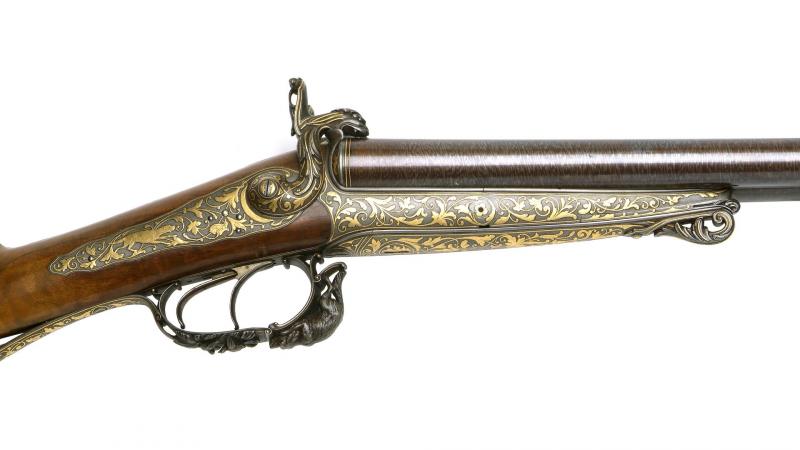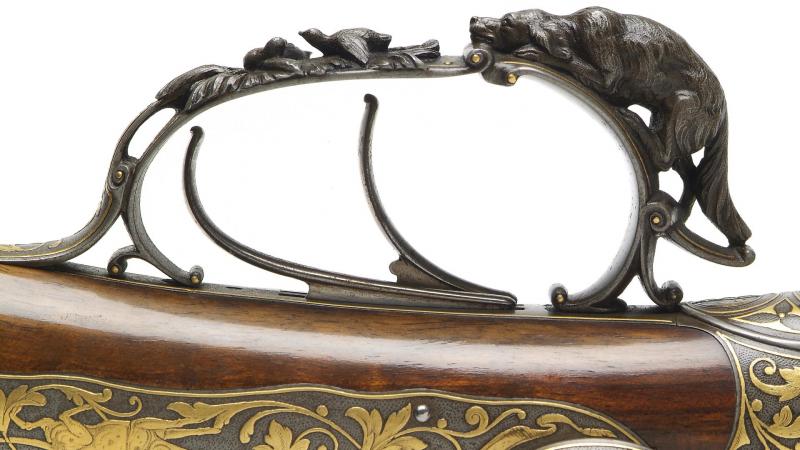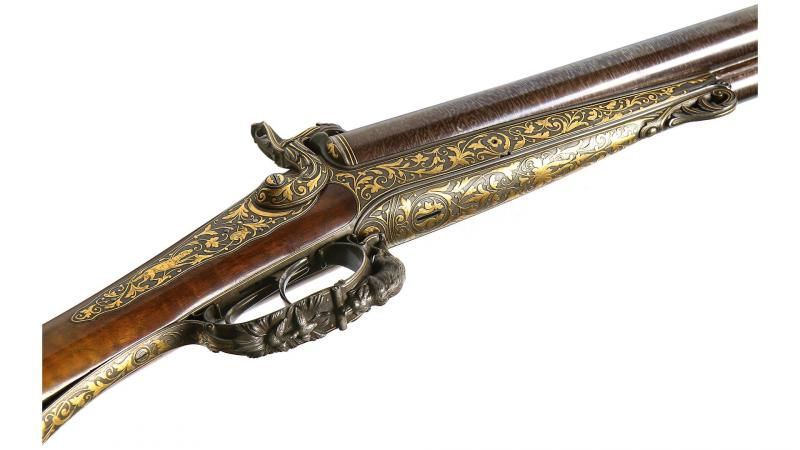Work classified as a Treasure by the Wallonia-Brussels Federation
Liège rifle from the 1867 Universal Exhibition in Paris
This weapon is a masterpiece of 19th-century chiselling and inlaying. In simple terms, it is a hunting rifle with two shots for spindle cartridges – the Lefaucheux system – which was very widespread at the time. However, the presentation is exceptional. The barrels, which are the work of Léopold Bernard in Paris, are based on “torsion Damascus”, a procedure that combines iron and steel forging, in order to obtain a flexible and resistant metal with the appearance of a uniform surface after acid treatment. The chiselling and the raised gold inlaying are by Liège-born Joseph Boussart. They are inspired, in the “neo-Renaissance style”, by cynegetic themes: dogs and stylised plant decorations. The trigger guard is chiselled in the round and represents a dog watching a pair of partridges, while the hammers of the dogs are worked into the form of chimeras.
The 1867 Universal Exhibition marked the height of the Second French Empire. It took place on the Champs-de-Mars where, twenty years later, the Eiffel Tower would be erected.
Experts from Liège, who were among the greatest arms manufacturers in the world, exhibited numerous products there. Pierre Joseph Lemille (1811–1882) – who would later found the Liège Arms Museum – played an important role, notably with this rifle and another similar example, which was chiselled by Cuvelier (MAL 4.720)
More information on the Treasures of the Wallonia-Brussels Federation
The decree of 11 July 2002 makes it possible to classify as a Treasure, the goods which are of notable interest for the Wallonia-Brussels Federation. Within this framework, several works whose artistic quality, rarity or links with the history and history of art are no longer in question, are further enhanced by this classification. This recognition makes it possible to highlight these jewels of our artistic and cultural heritage, but above all to better protect them, to help restore them or to prevent them from being sold abroad. Several major historical works are recognised as Treasures each year.
A protected property is given the status of "treasure". This term originates from European law, which offers each Member State the possibility of protecting its "national treasures of artistic, historical or archaeological value". These treasures are therefore exempt from the principle of free movement of goods within the European Union and may be subject to restrictions or bans on leaving the national territory concerned.
More information on the website of the Wallonia-Brussels Federation.


